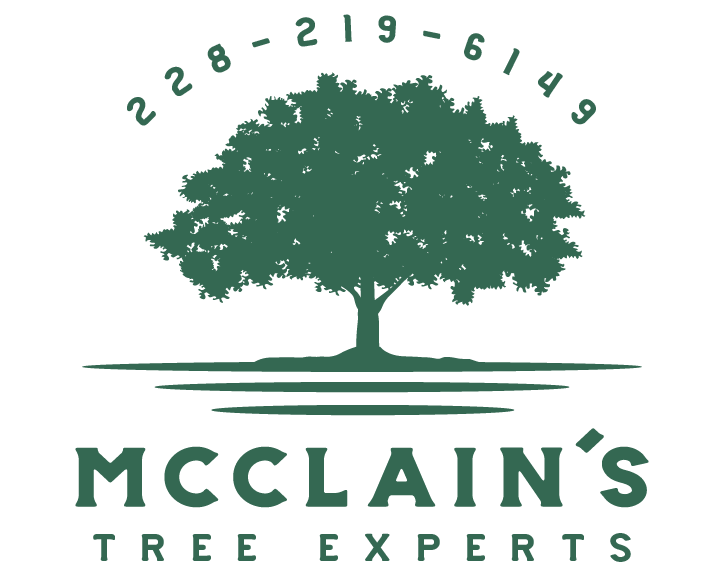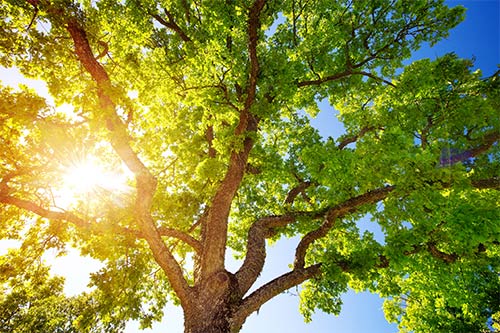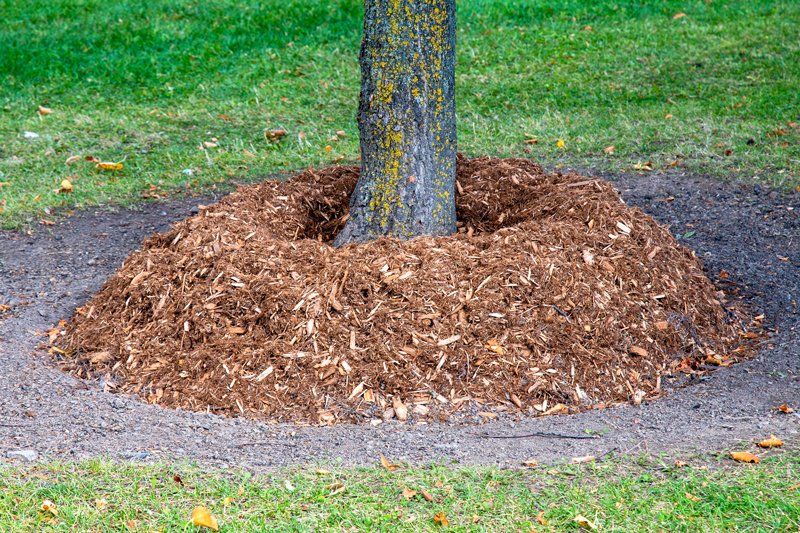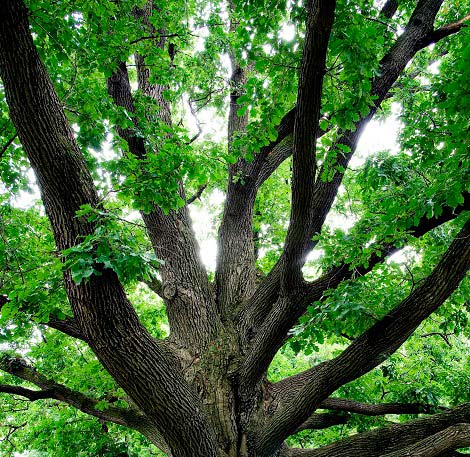Growing Trees in Dry Soil
If your yard is on the dry side, you may struggle to keep plants viable. If you can't even get flowers and shrubs to grow, you may assume trees are out of the question. However, if you choose the right trees and treat them right when they are young, they'll develop a deep root system and have little trouble tolerating the dry conditions.
Keep reading to learn how to succeed with trees in a dry yard.
Choose Trees That Tolerate Dry Soil
Many trees require moist soil. Even if you water them regularly, they may never quite thrive in a yard that is naturally dry. The following trees, however, will tolerate drier soil and periods of drought - and they're known to grow well in USDA zone 9.
Scarlet Oak
If you're looking for a large shade tree, the scarlet oak is a good choice. It has a mature height of 60 to 80 feet and grows up to 24 inches per year, according to Arbor Day Foundation. Scarlet oaks prefer full sunlight, and while they grow best in normal moisture levels, they're highly adaptable and can tolerate drought. Their name comes from their brilliant red fall color. They do produce acorns that some homeowners find a hassle to clean up.
Lacebark Elm
The lacebark elm is a medium-sized tree that grows to about 40 feet tall, but produces copious shade. It has thick, glossy leaves that turn yellow or purple in the fall. Lacebark elms are incredibly resilient and low-maintenance. You'll never have to prune, fertilize, or spray it for pests, although periodic watering can be helpful in dry soils.
American Sycamore
The American sycamore is known for its ability to grow in the harshest of climates. It reaches about 70 feet tall when mature and adds up to six feetof height per year. Its leaves are enormous and turn a deep yellow in the fall. The American sycamore also develops smooth, white bark in the winter, so it provides year-round beauty.
Apply Mulch to the Soil
Even though the trees above can tolerate drier soil than most, you can still help them along by applying mulch to the soil around your tree. The mulch will help trap moisture in the soil so it still stays somewhat moist when rain has been scarce. Here are a few tips for success with mulching:
- Choose organic mulch, like bark, which will break down slowly and add nutrients to the soil.
- Don't pack mulch directly against the tree trunk; this can lead to rot.
- Add a new layer of mulch each spring to keep the layer at a thickness of about two to four inches.
If you know your soil is nutrient-dense, you may be able to get away with using gravel or stone as a mulch. It will still trap in moisture, even though it does not break down and add nutrients to the soil.
Deep Water Periodically
You can also counteract some of the dryness by deep watering your trees periodically. Deep watering means applying the water in a way that encourages it to soak well down into the soil, where the roots are located.
To deep water, use a sprinkler, and make sure it soaks the area of the tree directly beneath the foliage, which is known as the drip zone. Be careful not to soak the tree's trunk. Set a soup can in the area being sprinkled. When there are a few inches of water in the can, you can stop watering.
Don't let dry soil deter you from planting trees. Choose trees that can tolerate some dryness, use mulch to your advantage, and practice deep watering. Contact McClain's Tree Experts if you're looking for tree care services in the Ocean Springs area.





